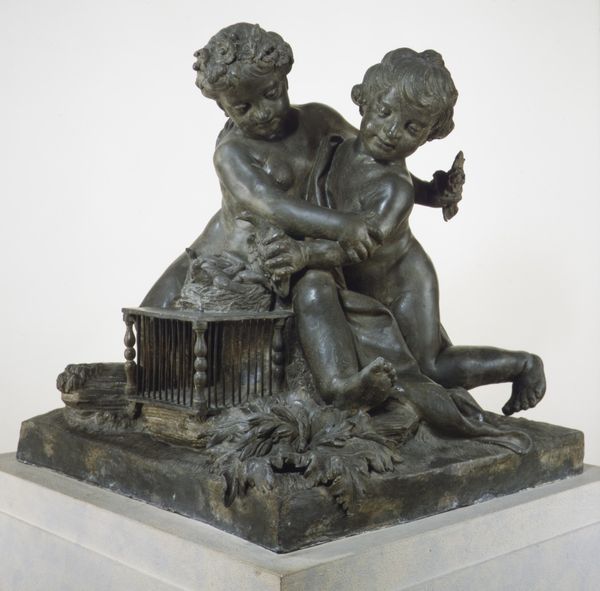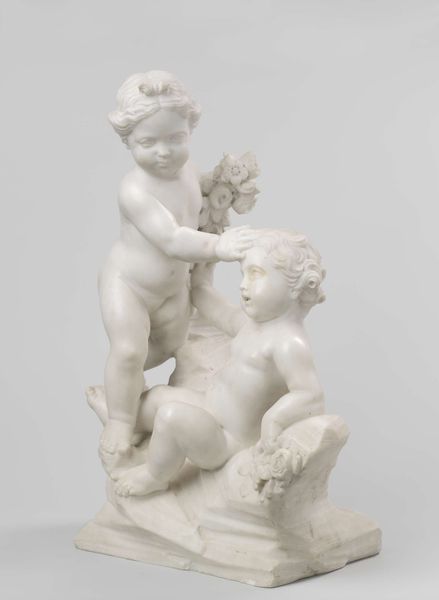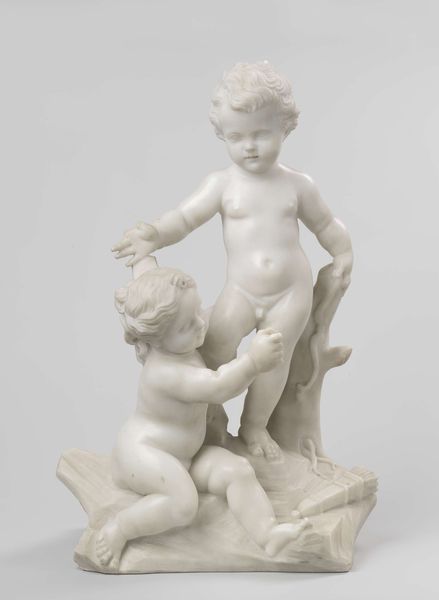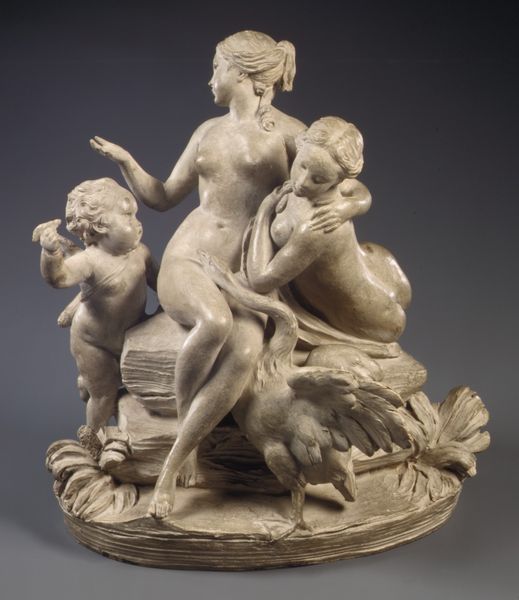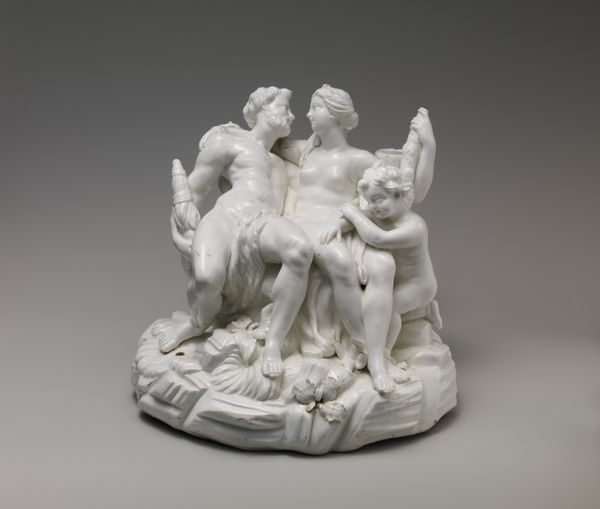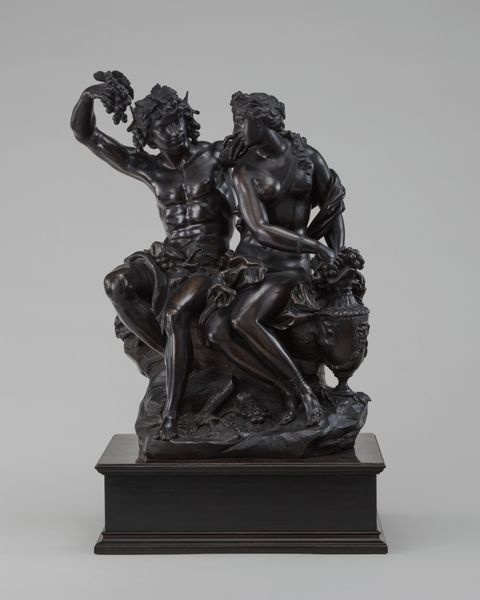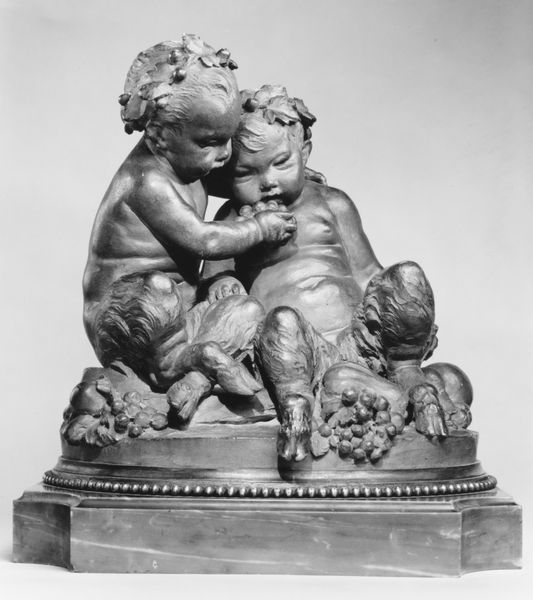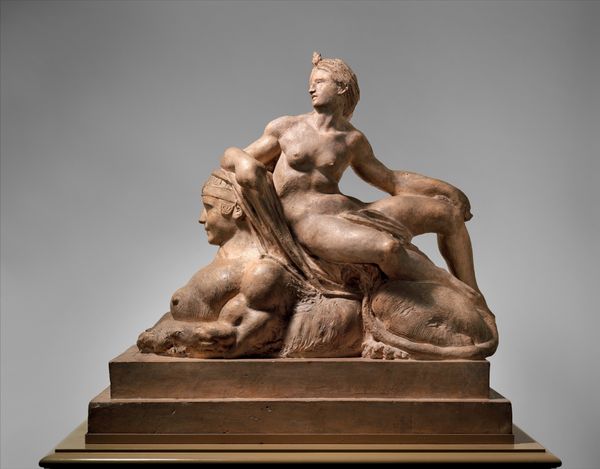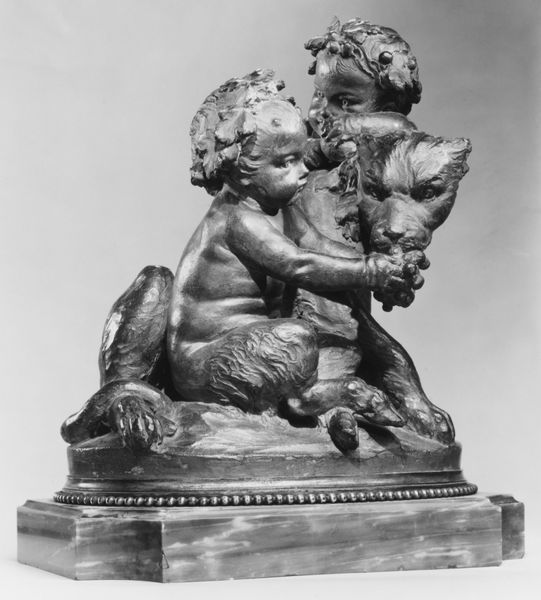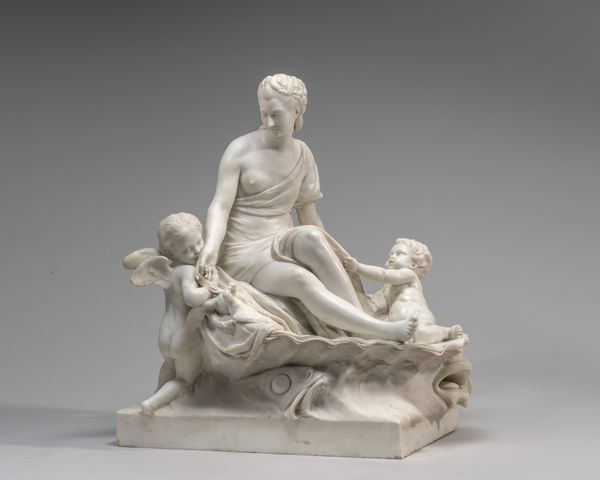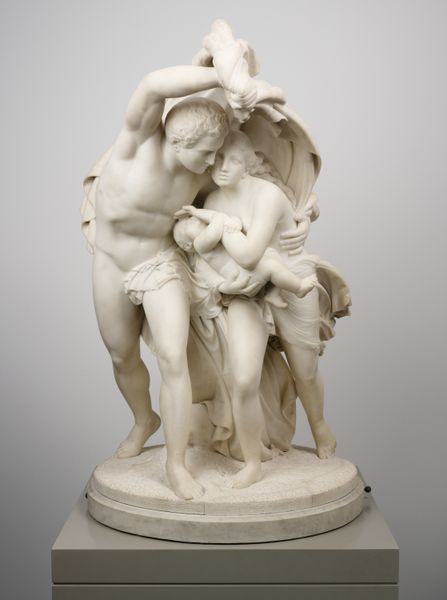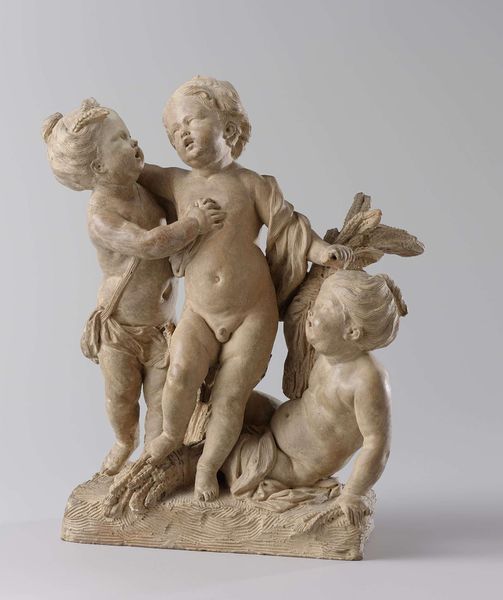
bronze, sculpture
#
allegory
#
sculpture
#
boy
#
bronze
#
figuration
#
sculpture
#
history-painting
#
decorative-art
#
rococo
Dimensions: Overall: 36 1/2 × 39 × 37 1/2 in. (92.7 × 99.1 × 95.3 cm)
Copyright: Public Domain
Editor: Here we have Francesco Ladatte's "Children Playing with Fruit," a bronze sculpture made sometime between 1740 and 1755. It's such a tactile piece. All those grapes! What is your take on this work? Curator: It’s intriguing to consider the materials and processes at play here. Bronze, a deliberate choice. We see the Rococo style’s interest in decorative art. But think about the foundry. How was the bronze sourced, who were the artisans, what was their socioeconomic status, and how did this all shape the final product? Editor: So you're focusing less on the allegory and more on the labor of it? Curator: Precisely. Allegories of childhood and abundance were fashionable, but bronze casting in this period represented a sophisticated level of material engagement and craft production. Every stage in the creation reflects consumption. These “Children playing with fruit” become symbolic of class. Where were these sculptures being displayed, and by whom? Editor: So, this isn’t just about the cute cherubs; it’s a snapshot of 18th-century industry. Curator: It’s a trace. Every mark on the bronze, every curve reflects choices about materials, skill, patronage, and consumption. Does this consideration of material labor change how you interpret it now? Editor: Definitely. I was initially thinking of the sweetness of youth. Now I can't stop picturing the people who mined the ore and poured the metal. Curator: Exactly. The artist's decision and the buyer's capital converge in the artwork and transcend mere decoration. We remember the hands that brought it into existence.
Comments
No comments
Be the first to comment and join the conversation on the ultimate creative platform.
